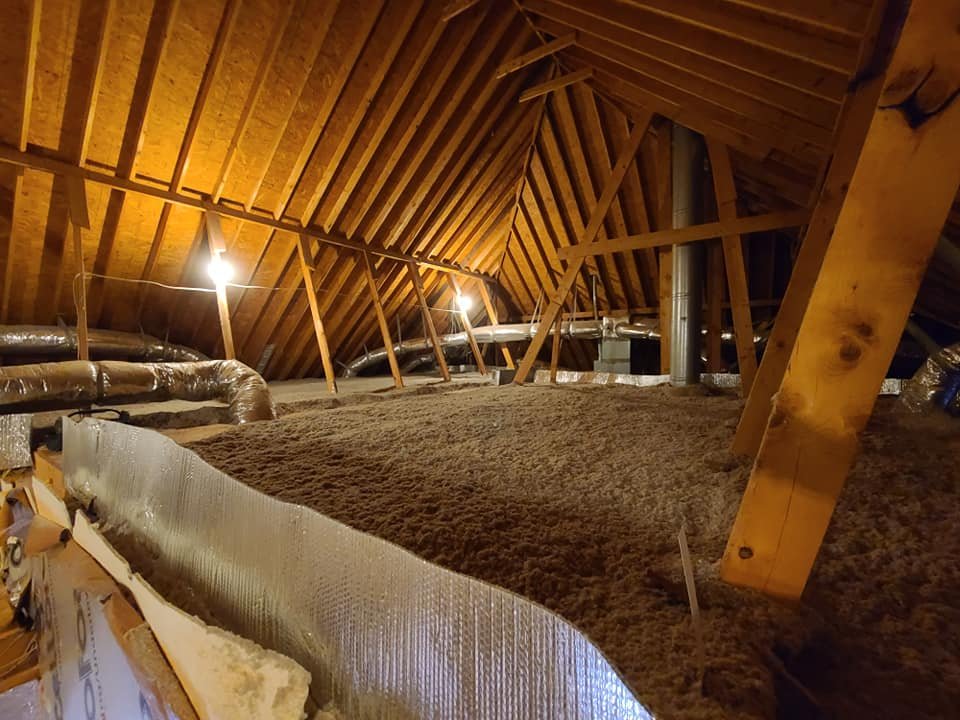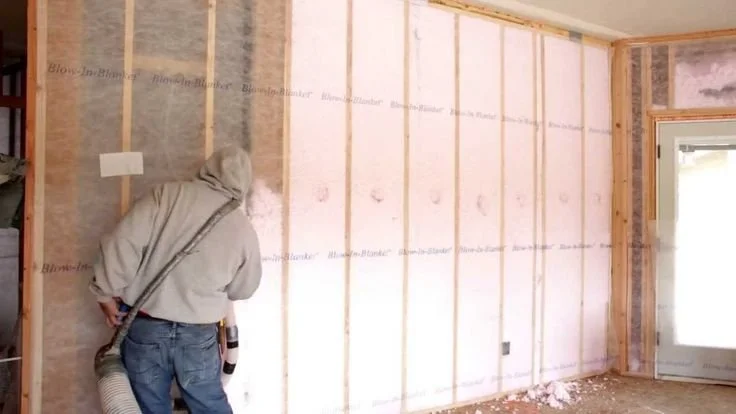Blown-In Cellulose
-

Cellulose
Blown-in cellulose insulation is an eco-friendly material made from recycled paper products that are treated with fire- and pest-resistant additives. Installed with specialized equipment, cellulose is blown into wall cavities, attic floors, and hard-to-reach areas, filling every gap and creating a dense thermal blanket.
Unlike traditional batt insulation, blown-in cellulose conforms to spaces of all shapes and sizes. This ensures better coverage and fewer gaps, which means less air leakage, improved comfort, and lower energy bills. It’s also an environmentally conscious choice, as it makes use of recycled content and helps reduce waste.
Key Benefits:
Excellent coverage that minimizes drafts and cold spots
Eco-friendly material made from up to 85% recycled content
Naturally treated to resist fire, mold, and pests
Great for both new construction and retrofit projects
Quieter homes thanks to sound-dampening properties
-

Fiberglass Cellulose
Blown-in fiberglass insulation is a versatile and cost-effective solution for improving your home’s comfort and energy efficiency. Instead of pre-cut batts, this type of insulation is installed using specialized equipment that “blows” loose fiberglass fibers into place. The result is a soft, fluffy layer of insulation that conforms to the shape of your attic, walls, or other cavities, creating consistent coverage with no gaps.
Blown-in fiberglass is fire-resistant, lightweight, and long-lasting. It won’t settle or lose effectiveness over time, and when installed correctly, it delivers dependable performance for decades. Homeowners often choose blown-in fiberglass because it’s affordable, clean, and ideal for covering large areas quickly.
Key Benefits
Provides seamless coverage that reduces heat loss and drafts
Lightweight fibers that won’t sag, settle, or compress over time
Naturally fire-resistant for added safety
Cost-effective way to improve efficiency in older homes or new construction
Can be installed quickly with minimal disruption
-

Fiberglass Blown-In & Cellulose Blown-In
Both fiberglass and cellulose can be installed as blown-in insulation. They both aren’t a one-size-fits-all solution — they shine in specific applications where its density and coverage are most effective.
Attics
Provides a thick, seamless blanket of insulation on attic floors
Reduces heat loss through the roof, one of the biggest areas of energy waste
Ideal for both older homes and new construction
Wall Cavities
Can be dense-packed into existing walls during retrofits
Fills gaps around electrical wires, pipes, and framing for better coverage
Improves comfort in older homes without major renovations
Sound Control
Because of its density, cellulose is excellent at absorbing sound
Often used in interior walls for added privacy and noise reduction
Which is Best?
Choose fiberglass if you want a lightweight, affordable, and non-combustible product with minimal settling.
Choose cellulose if you want maximum coverage, eco-friendly materials, and better soundproofing.